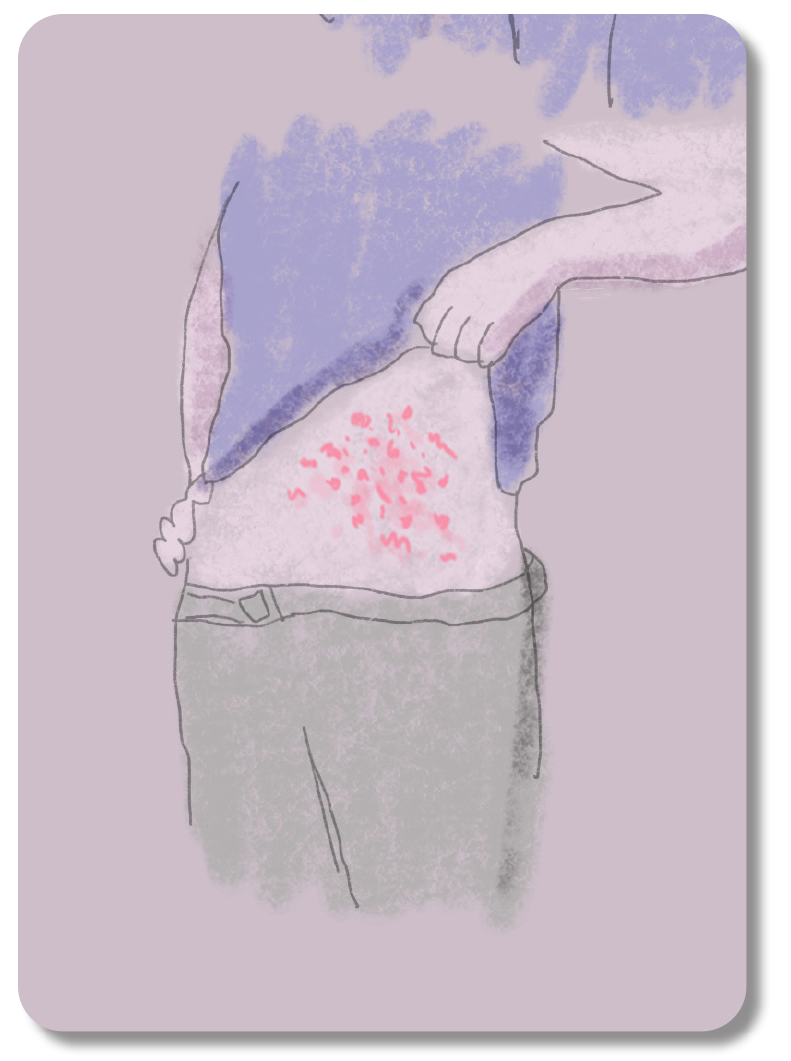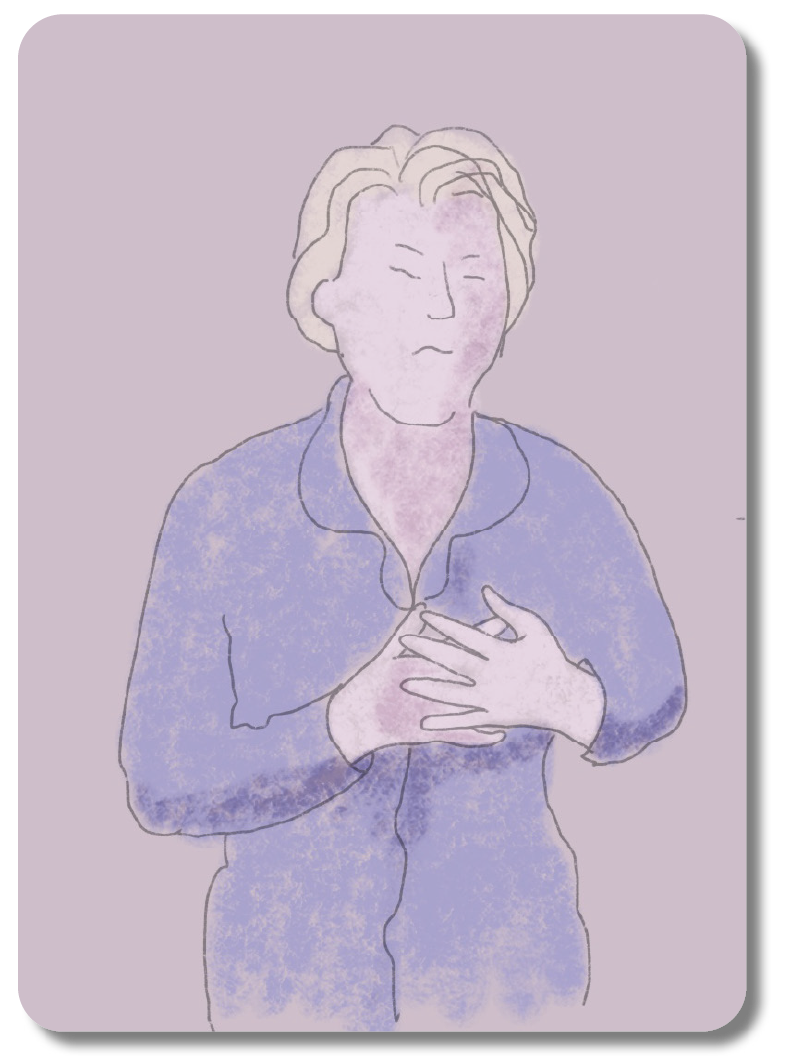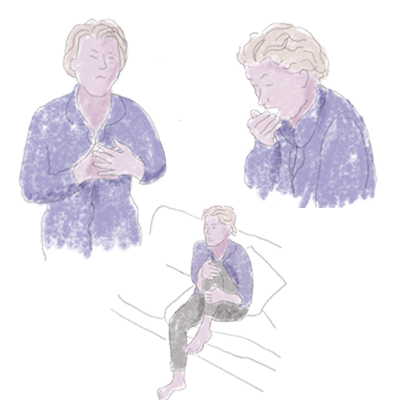Systemic mastocytosis (SM) can cause debilitating symptoms, such as rash and life-threatening anaphylaxis, and detrimental long-term outcomes for patients1,2
SM is a genetic disease associated with the uncontrolled proliferation and activation of abnormal mast cells, and is driven by the KIT D816V mutation in ~95% cases2–4
Estimated prevalence
~1 in 10,000
adults have SM5*

Did you know?
Despite polypharmacy with symptom-directed therapies, many patients’ disease remains uncontrolled. There is a need for mast cell-reducing therapies that target the underlying driver of the disease6
The 2022 World Health Organization (WHO) diagnostic criteria identify 2 types of SM, which are classified into 6 subtypes7
SM can have detrimental long-term effects on patients, regardless of subtype:
Non-Advanced SM
Non-Advanced SM carries with it a risk of life‑threatening anaphylaxis in some cases3
Advanced SM
Advanced SM is associated with a poor prognosis and decreased overall survival of <3.5 years due to organ damage3,8
Advanced SM patients commonly exhibit mast-cell mediator symptoms such as maculopapular rash and life-threatening anaphylaxis1


Did you know?
SM may progress over time in subsets of patients4†
*Based on Cohen 2014 study of 548 adults with SM diagnosed from 1997 to 2010 in linked Danish national health registries, with a 14-year limited-duration prevalence estimated at 9.59 per 100,000 as of 1 January 2011.5
†~3% of patients with ISM and ~18% of patients with SSM progress to more advanced disease.4
20+
unpredictable and potentially severe symptoms can occur in patients with SM.1,4 The presentation and course of symptoms vary amongst SM patients. However, common symptoms that could raise the suspicion of SM include:
95%
of ISM patients and 50% of advanced SM patients experience maculopapular skin lesions9*
Small monomorphic lesions often appear on the thighs or trunk of the body9
Wheal-and-flare reaction is induced by stroking lesions with tongue spatula9
33%
of SM patients experience anaphylaxis1†
Commonly triggered by hymenoptera stings; unexplained or idiopathic anaphylaxis is also commonly observed3
Frequently coupled with hypotension and can be life-threatening3
45%
of SM patients experience diarrhoea1†
Often chronic and associated with other gastrointestinal symptoms such as nausea and abdominal pain1
Recognising severe and recurrent instances of the common symptoms can raise the suspicion of SM: mast cell examination, serum tryptase assessment or high‑sensitivity KIT D816V mutation testing can help diagnose SM10,11
*As described by an expert-panel review of adult-onset mastocytosis (predominantly indolent population) in Hartmann 2016 study.9
†Based on data from 163 patients with self-reported mastocytosis in Mast Cell Connect registry in Jennings 2018 study.1
Explore the full range of potential clinical consequences across multiple organ systems for patients with SM1,3,4
This is not an inclusive list of all symptoms. The frequency and intensity of any given symptom may vary from person to person
SYSTEMIC1,4
Fatigue
Weight loss
Anaphylaxis
Malaise
RESPIRATORY1,4
Dyspnoea
Nasal congestion
Throat swelling
Wheezing
MUSCULOSKELETAL4
Bone pain
Myalgia
Osteolytic lesions
SKIN1,4
Pruritus
Flushing
Maculopapular lesions
CARDIOVASCULAR4
Anaphylaxis with
hypotension and syncope
Dizziness
Palpitations
LIVER/SPLEEN3
Liver dysfunction
Hypersplenism
NEUROPSYCHIATRIC4
Memory/cognitive impairment
Depression
Migraines
Sleep disturbance
GASTROINTESTINAL1,4
Nausea/vomiting
Diarrhoea
Abdominal pain
Heartburn or reflux
Organopathy due to mast cell infiltration can occur, causing lymphadenopathy, hepatomegaly/ascites, cytopenias, malabsorption or protein-losing enteropathy with weight loss4
Patients commonly experience uncertainty about whether a particular symptom is due to their mast cell disorder1
Symptoms can be triggered by aspects of everyday life, including heat, stress, exercise, and food, although these triggers vary considerably and are not always representative1
Heat triggered
82%
of patients1‡
Stress triggered
81%
of patients1‡
‡Based on data from Jennings 2018 study.1

